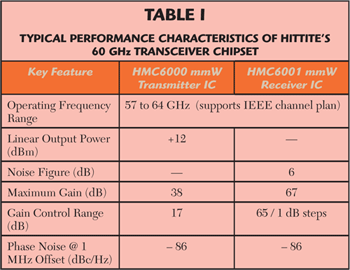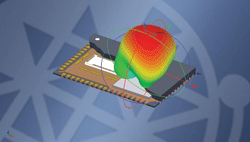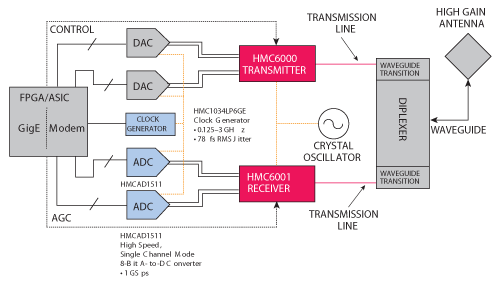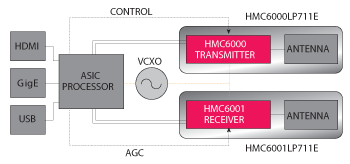
The demand for high capacity data continues to increase year over year at significant rates. In an ongoing race, technology and application developers have pushed into higher and higher bandwidths, first with voice, then data and now video is driving the demand. This demand is evident in cellular technology with the migration from AMPS to 3G, and now the rollout of 4G capabilities aimed at the millions of application-rich smartphone and tablet devices. It is also evident in the home, where WiFi has moved from 1 to 54 Mbps and now is pushing into hundreds of Mbps with IEEE 802.11n and 802.11ac. Spectrum availability has been a prime consideration in the development of technologies to meet the data capacity demand. Techniques such as Orthogonal Frequency Division Multiplexing (OFDM), Multiple In Multiple Out (MIMO), higher order modulations and the use of smaller cells have all been effective approaches to increasing data rates and data capacity within a given amount of spectrum.
Recognizing many of the important developments taking place in the 57 to 64 GHz band, Hittite Microwave is now offering a highly integrated silicon chipset solution. Hittite’s HMC6000/6001 chipset not only solves many of the key technical challenges encountered at millimeter-wave frequencies, but also enables turn-key multi-Gbps communication links at 60 GHz.
60 GHz Applications
The wide bandwidth and high EIRP available in this band, combined with the attenuation properties over long distances, make 60 GHz an attractive solution for short range applications requiring multi-Gbps data capacity. These include outdoor point-to-point radio solutions for metrocell/picocell backhaul, and indoor datalink applications such as wireless Gbps cable replacement (HDMI, USB 3.0, Thunderbolt, etc.), wireless docking stations, and video/magazine kiosks. The wide bandwidth available is also applicable to wireless sensor applications for robotics requiring short range with high precision.
Several standards and industry groups have emerged to address the use of 60 GHz including the IEEE 802.11ad and 802.15.3c standards, and the WirelessHD and Wireless Gigabit Alliance (WiGig) consortiums. The many benefits of 60 GHz come with significant challenges. Interconnecting components on a printed circuit board at these frequencies is quite difficult and requires expensive board materials. Low-cost solutions can only exist if the millimeter-wave interconnects are incorporated into the chips and/or packaged parts. Hittite Microwave, a contributing member of WiGig, solves this challenge with an integrated silicon chipset that translates standard baseband signals directly to and from 60 GHz, minimizing the need for high frequency component interconnects on the PCB.

Fig. 1 Hittite's 60 GHz transceiver chip set.

Hittite’s HMC6000 transmitter (Figure 1a) includes all the functionality required to translate a baseband analog I and Q signal up to a selected channel in the 60 GHz band, requiring only a low frequency external reference clock. Constructed in SiGe BiCMOS, it has analog I and Q (differential) inputs with DC coupling to enable cancellation of DC offsets and carrier feedthrough. It includes a low phase-noise frequency synthesizer which allows tuning across the 57 to 64 GHz ISM band with a step-size of 500 or 540 MHz (one quarter of the IEEE channel spacing) depending on the reference input frequency. The HMC6000 also provides up to 38 dB of variable gain to achieve a saturated output power of 17 dBm and a linear power of up to 12 dBm, which is significantly higher than what is currently achievable in CMOS. The differential RF output provides a low-loss RF transition with high output efficiency.
The HMC6001 receiver chip (Figure 1b) accepts the millimeter-wave signal at a selected channel in the 60 GHz band and translates this down to differential analog baseband I and Q. All the necessary frequency generation, filtering and gain control is on-chip, including a programmable high-pass filter corner to help remove residual DC offset and LO feedthrough. The HMC6001 receiver achieves a 6 dB noise figure at maximum gain. See Table 1 for a performance summary of the transceiver chipset. A simple 4-wire digital serial interface provides all control and status of the chips including frequency channel selection, gain control, circuit biases and filter bandwidths.

Fig. 2 Hittite's 60 GHz antenna-in-package (AiP) solution.
Phase noise can be a significant challenge at 60 GHz since the reference and VCO phase noise is multiplied up to this high frequency. To avoid degrading the receiver noise figure, the integrated phase noise is typically 10 dB below the required SNR of the modulation. Fortunately, with the faster symbol rates used at 60 GHz, the integrated phase noise of concern is much further away from the carrier. For example, with the 1.76 GHz symbol rates of WiGig, phase noise below 1 MHz offset has insignificant impact. For the WiGig symbol rates, the HMC6000 and HMC6001 have an integrated phase noise of roughly -25 dBc enabling up to 16 QAM modulation.
Hittite offers both connectorized and antenna-in-package (AiP) solutions using these chips to facilitate customer integration of 60 GHz into their product. For example, Hittite’s HMC6000LP711E solution (shown in Figure 2) combines a 60 GHz antenna with the millimeter-wave transmitter chip in a low cost 7 × 11 mm QFN plastic package. This enables a surface-mount compatible solution using standard low cost PCB assembly techniques and requires no millimeter-wave experience. The HMC60001LP711E solution combines the millimeter-wave receiver chip with an antenna in an identical package.

Fig. 3 60 GHz Gigabit Ethernet point-to-point microwave backhaul solution.
Solution Sets
The Hittite HMC6000/6001 chipset and packaged parts are ideal for emerging 60 GHz applications, including outdoor point-to-point links and indoor consumer devices. Figure 3 is a block diagram of a typical point-to-point microwave radio transporting one or more Gigabit Ethernet data streams over a 60 GHz link. These are full-duplex connections so a diplexer is commonly used to provide the necessary isolation between the transmit and receive channels while sharing a common, high gain antenna. Earlier 60 GHz point-to-point systems required numerous discrete components to build the radio which was expensive, large and power hungry. Hittite’s integrated chipset solution reduces the radio portion of the design to two chips and a crystal oscillator, and the interconnect challenge is reduced to two short transmission lines to the diplexer.

Fig. 4 Consumer-oriented multi-gbps solution adhering to the WiGig standard.
Figure 4 is a block diagram of a consumer-oriented multi-Gbps device adhering to the WiGig standard. A variety of high speed digital interfaces can be used including GigE, USB, HDMI or even PCIe. In order to meet the price point of the consumer market, all of the network processing, Media Access Control and Physical Layer functionality would be integrated into a single ASIC. The ADCs and DACs will typically operate at multi-Gbps sampling rates, of at least twice the symbol rate of the modulation used. To minimize power and cost, these data converters would also likely be integrated as part of the baseband ASIC. A diplexer is not required for this application since WiGig uses Time-Division Duplex (TDD) multiplexing. The high gain antenna needed for point-to-point links can be replaced by a much smaller, lower gain antenna since the path distance is limited to the size of a room.
To minimize the loss due to the 60 GHz transmission lines to the antenna, the ideal location for the radio is next to, or integrated with the antenna, and not necessarily co-located with the desired location for the baseband processing. The differential baseband interface provided with Hittite’s integrated chipset is desirable to allow for possible separation between the ASIC and the optimal antenna location.

Fig. 5 HMC6450 antenna-in-package transceiver evaluation kit.
Transceiver Evaluation Kits
To facilitate rapid evaluation of Hittite’s 60 GHz chipsets and customer prototyping for system development, Hittite is offering evaluation kits for both connectorized and AiP configurations. The HMC6450 is a 60 GHz AiP Transceiver Evaluation Kit and is shown in Figure 5. The HMC6450 includes two boards each with the HMC6000LP711E transmitter and HMC6001LP711E receiver. Together with configuration software, this provides everything needed to quickly set up a bi-directional link at 60 GHz with a universal analog baseband I and Q interface. The HMC6451 is a 60 GHz MMPX Transceiver Evaluation Kit and provides the same functionality with snap-on MMPX connectorized 60 GHz interfaces.
The unlicensed 60 GHz spectrum provides an excellent opportunity to meet today’s ever-growing demand for data capacity. Hittite Microwave now offers a highly integrated HMC6000/6001 silicon transceiver chipset targeting 60 GHz applications such as picocell backhaul and short-range multi-Gbps data rate indoor communication links. The 60 GHz chipset provides all the necessary functionality to translate I and Q baseband analog signals to a selected channel in the 60 GHz ISM band, using only an external low-frequency reference clock oscillator. For ease of use, the chips are also offered in connectorized packages and antenna-in-package solutions. The HMC6000/6001LP711E antenna-in-package solution combines a 60 GHz antenna with 60 GHz transmitter/receiver chips in a low-cost, plastic QFN package.
Hittite Microwave Corp.,
Chelmsford, MA
sales@hittite.com
www.hittite.com
